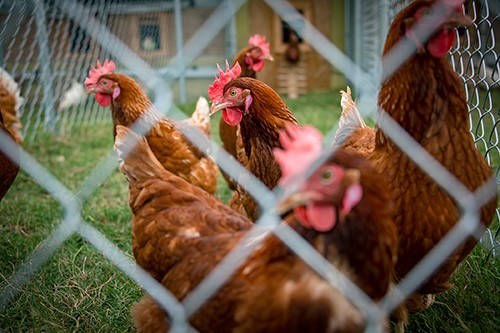Mississippi State adds cage-free unit to poultry department
New facility gives university researchers opportunities to compare cage and cage-free egg production and quality, as well as bacterial diversity between these housing types.
December 5, 2018

Mississippi State University has added a new component to its poultry research facilities to address the growing consumer and corporate demands for cage-free eggs.
As part of the Mississippi Agricultural & Forestry Experiment Station, the university has constructed a cage-free facility that gives university researchers and students opportunities to compare cage and cage-free egg production and quality, as well as bacterial diversity between these housing types, the university said in an announcement.
“In just a few years, the bulk of the laying hen industry is likely going cage-free,” said assistant professor of poultry science Pratima Adhikari, who joined Mississippi State in 2017. “We have to address questions that producers have about converting to cage-free production systems and bird health in a cage-free environment. Hen health will be the major issue while converting the production system to cage-free, and this should be addressed by implementing several management and feeding strategies in the facility.”
Currently, fewer than 16% of eggs are produced in a cage-free production environment, but to meet demand, approximately 70% of the nation’s 320 million birds will need to be cage-free by 2025, the announcement said.
“I have wanted to build a cage-free facility since my arrival on campus, to better understand the differences in management between the cage and cage-free systems,” Adhikari said. “For instance, hens in the cage-free system have access to both indoor and outdoor facilities. I want to look at how that impacts management practices.”
Adhikari and graduate students plan to measure egg quality through different criteria, including weight, specific gravity (shell quantity compared to shell contents), shell thickness and weight, as well as the quality of the egg white, to see if there are significant differences based on housing type.
A total of 200 hens are divided between 12 new dual pens, with each about 12 by 5 ft. inside and 24 by 5 ft. outside with outdoor access. Current breeds housed are Hy-Line W-36 and Hy-Line Brown, and Adhikari said the brown ones are well-suited to cage-free systems, while the W-36 are better adapted to conventional cages with fewer cage-mates.
Another aspect of the new structure is the use of lighting, which is configured for hens to get 16 hours of light and eight hours of darkness to simulate what is found in a commercial setting. Each pen has nesting boxes on the wall, a perch, feeder and water line.
“We plan on adjusting nutrition by supplementing these hens with different feed additives to see which additives produce a better egg quality,” Adhikari said.
Future plans include pullet cages for birds that have not reached laying age. Tampa Bay, Fla.-based Alaso is supplying these cages, which will hold as many as 1,500 pullets and will be used for nutrition research trials. Also, Adhikari and other Mississippi State scientists are collaborating with Cal-Maine Foods, the largest egg producer in the U.S., on several studies.
The new structure adds to the current simulated commercial poultry laying house situated on the H.H. Leveck Animal Research Center, also known as South Farm, with hens in both conventional and enriched colony cages.
You May Also Like



